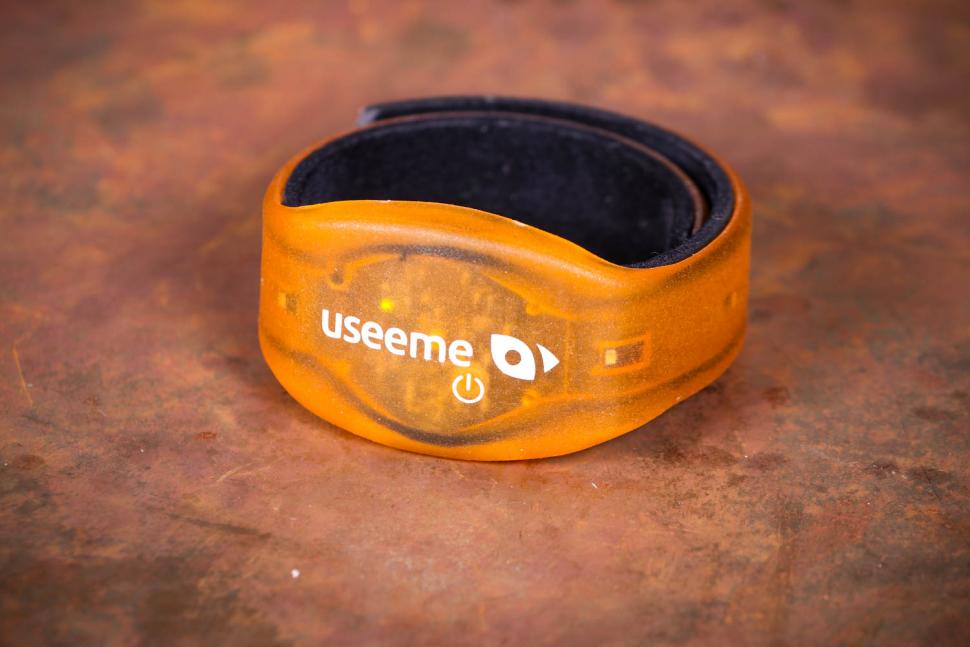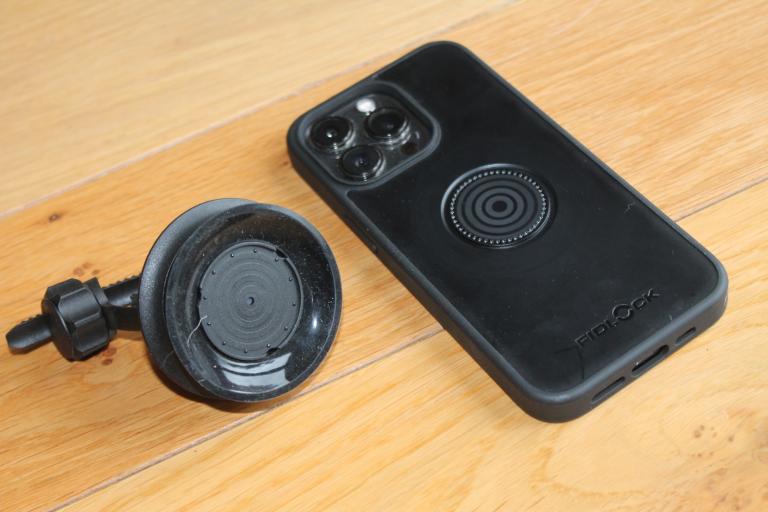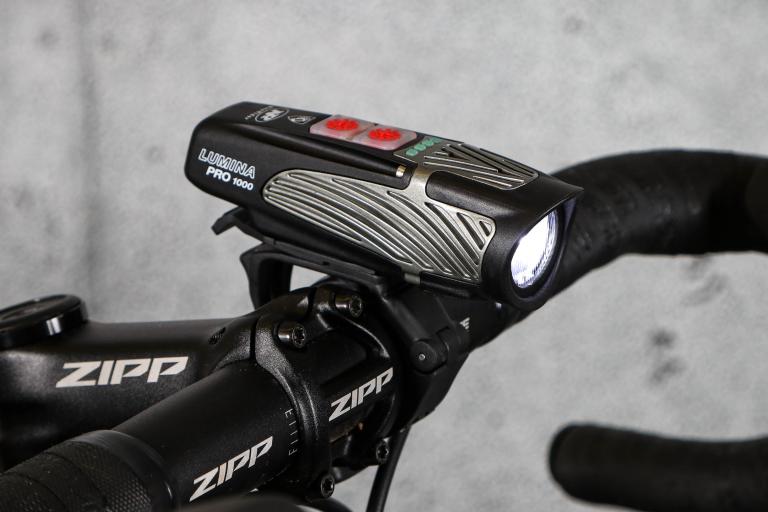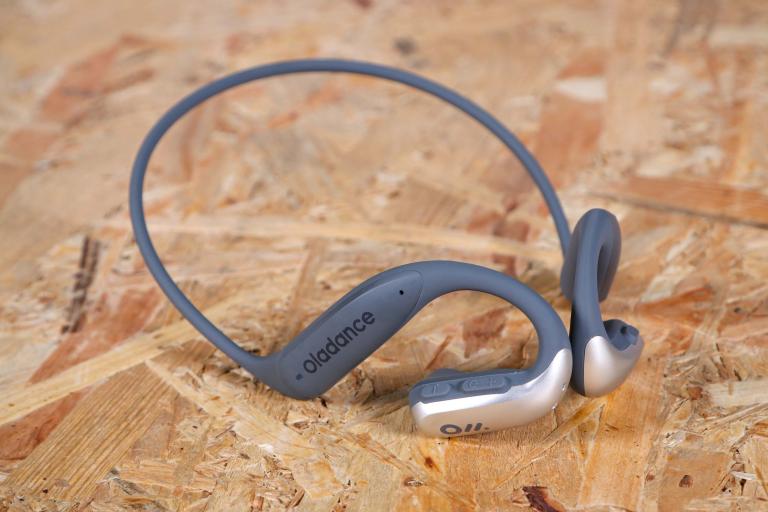- News
- Reviews
- Bikes
- Accessories
- Accessories - misc
- Computer mounts
- Bags
- Bar ends
- Bike bags & cases
- Bottle cages
- Bottles
- Cameras
- Car racks
- Child seats
- Computers
- Glasses
- GPS units
- Helmets
- Lights - front
- Lights - rear
- Lights - sets
- Locks
- Mirrors
- Mudguards
- Racks
- Pumps & CO2 inflators
- Puncture kits
- Reflectives
- Smart watches
- Stands and racks
- Trailers
- Clothing
- Components
- Bar tape & grips
- Bottom brackets
- Brake & gear cables
- Brake & STI levers
- Brake pads & spares
- Brakes
- Cassettes & freewheels
- Chains
- Chainsets & chainrings
- Derailleurs - front
- Derailleurs - rear
- Forks
- Gear levers & shifters
- Groupsets
- Handlebars & extensions
- Headsets
- Hubs
- Inner tubes
- Pedals
- Quick releases & skewers
- Saddles
- Seatposts
- Stems
- Wheels
- Tyres
- Health, fitness and nutrition
- Tools and workshop
- Miscellaneous
- Buyers Guides
- Features
- Forum
- Recommends
- Podcast
£59.99
VERDICT:
Best of the bunch when it comes to cycling indicators and they do work well
Weight:
76g
Contact:
At road.cc every product is thoroughly tested for as long as it takes to get a proper insight into how well it works. Our reviewers are experienced cyclists that we trust to be objective. While we strive to ensure that opinions expressed are backed up by facts, reviews are by their nature an informed opinion, not a definitive verdict. We don't intentionally try to break anything (except locks) but we do try to look for weak points in any design. The overall score is not just an average of the other scores: it reflects both a product's function and value – with value determined by how a product compares with items of similar spec, quality, and price.
What the road.cc scores meanGood scores are more common than bad, because fortunately good products are more common than bad.
- Exceptional
- Excellent
- Very Good
- Good
- Quite good
- Average
- Not so good
- Poor
- Bad
- Appalling
Cycling indicators often fall short of the mark, but these Useeme Indicator Wristbands are actually a pretty decent idea as an addition to the simple hand signal. They are bright, easy to use, and offer plenty of battery life. Whether following road users can get their head round the concept of a cyclist with indicators is another issue.
- Pros: Near-flawless performance, bright enough to stand out amongst urban light clutter
- Cons: It's debatable how big a benefit they are over reflectives
Most cycling indicators are attached to the bike, normally either side of a front or rear light, and that can be their first drawback. A bike isn't that wide, so unless you are right up behind it it's difficult to see which direction is being indicated – plus the rider still needs to hand signal anyway. Useeme putting its indicators on the wrists does away with all of those issues. They are also very simple to use.
According to Useeme's website, these indicators have been developed over the last eight years, with each prototype being tweaked and refined until Useeme reached this production model.
Each indicator is 'handed'; you need to make sure you have them on the correct arm for them to work. You put them on with the arrow to the side of the Useeme logo pointing in the direction that they are going to be indicating.
There is only one button and that is to turn them on and off, plus if you give the standby button two short presses then they will enter an emergency mode where the LEDs flash continuously.
Once switched on they work completely automatically, using various sensors and an algorithm that Useeme has created to detect when you are making hand signals. Riding on the hoods or tops, they remain off until you raise your arm to the side and away they go.
Useeme has used nine LEDs in each wristband, which it says are the strongest low energy LEDs on the market.
Rather than have an on/off flash like a vehicle's indicator, Useeme has gone for a series of high-speed flashes before the LEDs turn off and then come back on to repeat. It does make them more eye-catching, while still having that recognised rhythm of an indicator.
There is a good range of movement that the LEDs work in, so you don't have to indicate in a specific way or position.
If you lift your hand to wipe your glasses or reach down for a bottle, the algorithm doesn't set of the lights, so accidental flashing is rare. I tried loads of ways to get them to falter, but I only had one instance – when I moved my hands from the drops to the hoods – and they only flashed once before turning off.
The Useeme bands are best used in the dark; they are bright enough to be seen in daylight, but if a driver can't see your arm stuck out in front of them then a ring of orange flashers probably isn't going to be adding much benefit.
During the evening rush hour in an urban environment, the Useeme is definitely bright and distinctive enough to cut through all of the other light pollution going on, and they are helpful if you want to change lanes entering roundabouts or negotiating city centre lane changes.
The main issue is how drivers deal with the information the Useeme bands are giving them. A cyclist with indicators isn't a common sight, and in certain situations they were just totally ignored by following drivers when I indicated my intentions. I certainly wouldn't put all of my faith into them.
> Buyer's Guide: 10 of the best high-visibility winter cycling jackets from £25 to £200
The wristbands run on lithium polymer batteries and Useeme supplies a double-headed Micro USB lead so you can charge them both at the same time.
Useeme doesn't give a quoted burn-time but it says that a commuter travelling two hours a day would get around two weeks of riding on a single charge and that seems about right when I put it to the test. It comes down to how much indicating you are doing, basically.
They have a battery level light built in, with the usual traffic light system in play: green for above 50%, flashing yellow for below 50% to 20%, and flashing red below that.
The USB charge port is covered by a flap that clicks closed, and I certainly didn't have any issues with wearing them in the rain.
Value
So, they work and pretty well too – but are they worth the £59.99 outlay?
If you really want indicators on your bike, they are a much better proposition than the £150 Blinkers Blinker Set. Admittedly, they do include front and rear lights, but there were reservations about their overall usefulness.
There are other options, like the Cycl Winglights that won investment from the BBC's Dragons Den programme, which'll set you back around the 30 quid mark. They plug into the bar ends, though, so are only really suitable for flat-barred bikes.
Conclusion
Would I buy them? Probably not, purely because I don't really signal that much.
Having over a decade of rush hour commuting behind me, on fast-flowing, busy A-roads and jam-packed city centres, I tend to use speed and road position – plus a dose of arrogance – to manoeuvre through the traffic.
I have had issues with cars ignoring a right hand turning signal occasionally, when riding in the dark with a black jacket and gloves on, which is why I'm a fan of gloves with reflectives – which arguably will get you noticed just as much.
For less experienced riders, though, who maybe don't have the confidence of working their way through town traffic, I can see the Useeme wristbands offering an extra level of safety and security.
As far as indicators go, they work well and are pretty much the best out there.
Verdict
Best of the bunch when it comes to cycling indicators and they do work well
road.cc test report
Make and model: Useeme Bicycle Indicator Wristbands
Size tested: x2
Tell us what the light is for, and who it's aimed at. What do the manufacturers say about it? How does that compare to your own feelings about it?
Useeme says, "When we first looked around on the market, we only saw complicated bike turn signal solutions that are operated by switches, or have other drawbacks.
"We thought staying safe shouldn't interfere with the simple joy that is cycling, so we had 2 clear principles to start with:
"Instead of putting something on the bike, let's make wristbands, put lights on the hands and light up the hand signals.
"Let's avoid buttons or switches and make everything completely automatic."
The Useeme indicators are a very well thought idea, especially for those who commute in darkness.
Tell us some more about the technical aspects of the light
From Useeme:
Simply automatic
Simply make a hand signal to start flashing, then put your hand back on the handle to stop flashing.
100% Automatic
Useeme's motion sensor technology detects your hand signals. No switches, no distractions, it's fully automatic.
The wristbands start flashing when you make a hand signal and stop flashing when your hand is back on the handle. You cycle just like before, but much safer.
Smartly programmed
We put a lot of effort into programming Useeme and fine-tuned the hand signal detection algorithms. Your hand signals are always detected but the wristbands won't flash when you scratch your nose or reach down for the water bottle.
It works with all kinds of bikes and all types of handlebars, even after changing your grip.
Great battery life
Useeme wristbands are powered by state-of-the-art Lithium polymer batteries. A double-headed micro USB cable is included for charging, but you won't have to use it very often.
With average commuter usage (2 hours a day) you can go at least 2 weeks on a single charge.
Always visible
Bright orange power LEDs emit rapid bursts of light to make sure your hand signals are always visible. The flashing is impossible to miss even in bright daylight.
The lights run around your wrist to make sure the flashing is visible to everyone around you.
Comfortable and flexible
The wristbands are easy to put on and flexible enough to fit all your clothes. Use them with gloves, fitness trackers, on your jacket, or your bare hands.
Microfibre padding inside makes them comfortable on bare hands. Comes in 2 sizes.
Weather proof
Some people only ride their bikes when the sun is out.
If you're not one of those people, you can still count on Useeme Bike Turn Signals. We built the wristbands to be very robust and withstand any weather.
Even when it's dark and rainy outside, your hand signals will be bright and shiny.
Rate the light for quality of construction:
8/10
Rate the light for design and ease of use. How simple was the product to use?
9/10
Very simple indeed.
Rate the light for the design and usability of the clamping systems:
8/10
There are two sizes available and they literally wrap around your wrist. They are comfortable against bare skin but also flexible enough to be worn over the top of a jacket sleeve or glove.
Rate the light for waterproofing. How did it stand up to the elements?
9/10
Rate the light for battery life. How long did it last? How long did it take to recharge?
9/10
Depending on how much indicating you are doing, you should get about 20 hours out of one charge. Charging takes a couple of hours and you have battery level warning lights.
Rate the light for performance:
8/10
Rate the light for durability:
8/10
Rate the light for weight:
8/10
Rate the light for value:
5/10
Tell us how the light performed overall when used for its designed purpose
The algorithm works well and they are simple to set up and use.
Tell us what you particularly liked about the light
Highly visible.
Tell us what you particularly disliked about the light
Their price can be seen as a bit of an outlay against something like some reflective gloves or wristbands.
How does the price compare to that of similar products in the market, including ones recently tested on road.cc?
Bit of tricky one to gauge as there aren't loads of these products on the market, but they're not cheap.
Did you enjoy using the light? Yes
Would you consider buying the light? No, I explain why in the conclusion above
Would you recommend the light to a friend? Yes
Use this box to explain your overall score
They won't be for everyone, and my overall thought is that they are a good solution to a problem that maybe isn't there. The key thing is that the algorithm works near-flawlessly. They are quite expensive though.
About the tester
Age: 40
I usually ride: This month's test bike My best bike is: B'Twin Ultra CF draped in the latest bling test components
I've been riding for: Over 20 years I ride: Every day I would class myself as: Expert
I regularly do the following types of riding: time trialling, commuting, club rides, sportives, fixed/singlespeed
As part of the tech team here at F-At Digital, senior product reviewer Stu spends the majority of his time writing in-depth reviews for road.cc, off-road.cc and ebiketips using the knowledge gained from testing over 1,500 pieces of kit (plus 100's of bikes) since starting out as a freelancer back in 2009. After first throwing his leg over a race bike back in 2000, Stu's ridden more than 170,000 miles on road, time-trial, track, and gravel bikes, and while he's put his racing days behind him, he still likes to smash the pedals rather than take things easy. With a background in design and engineering, he has an obsession with how things are developed and manufactured, has a borderline fetish for handbuilt metal frames and finds a rim braked road bike very aesthetically pleasing!
Latest Comments
- brooksby 11 min 21 sec ago
Trust me: my estate will never reach levels where inheritance tax becomes due
- FionaJJ 22 min 22 sec ago
At risk of being cynical, and stereotyping the police, it's so they don't have to leave the comfort of their panda cars and pursue on foot when...
- Wardy74 29 min 10 sec ago
Most, if not all car sales businesses spill over from their premises onto surrounding streets pavements and cycle paths. One local to me have been...
- andystow 31 min 56 sec ago
But now you don't have to. Allegedly.
- chrisonabike 35 min 31 sec ago
Apparently an erotic ring to it for some. What about armour-clad Segway-ists though?
- Patrick9-32 39 min 49 sec ago
Since Kona's rebirth after they kept the stinky for waaaay too long they have been one of the most consistently desireable mountain bike brands. If...
- luk 1 hour 17 min ago
Device with built in battery?? Shocking!!
- richliv 1 hour 41 min ago
£5500 is same price as the equivalent 2020 Trek Madone (SL7) which is now about 50% more. Hopefully this will drive stupid prices down a bit, I...
- RNTRMP 2 hours 4 min ago
" The lightest pedal system currently on the market" is debatable, the Xpedo Thrust SL are 168g a pair, KEO compatible, and a fraction of the cost.







Add new comment
6 comments
I don't know if anyone else is getting the pop up ad for INDI<8A, they don't look as good as the ones reviewed above, but they are cheaper.
https://www.indik8a.com/?gclid=EAIaIQobChMIlOibne_z5QIV2KB7Ch1iKQoWEAEYA...
And crazy-legs, you seem right on calling the 8 month thing.
I often have flashing led bands wrapped around my wrists (couple of quid each). I don't consider them indicators, just extra arm visibility when I indicate...
This is the problem that Stu and everyone else reviewing 'safety' equipment has: despite what 'common sense' would tell you, there's absolutley no improvement in safety or security.
Even for the most obvious item - a helmet - there's no improvement in 'safety'. What might happen, is in the very unlikely event of something bad happening, you might come out a bit better off. Grazes instead of a few stitches. Maybe. But population-level statistics tell us that overall it's basically a wash, or you're going to be worse-off (see: 'New Zealand bike helmet law outcomes'). In my mind, 'safe' means nothing's happened. You avoided an accident. 'safety' for cycling means separate infrastructure, mostly, to stop bad things happening in the first place.
As Stu points out: "in certain situations they were just totally ignored by following drivers when I indicated my intentions. I certainly wouldn't put all of my faith into them."
...I'd go as far as to say that if you think these will make you safer, you are likely to act like they have made you safer, and therefore will ride with less caution, assuming others can see you, understand your intent, and will act within the law. Many think this is why bicycle helmets don't seem to work at a population level - people take more risks because they think they're safer.
Me? I wouldn't use these or give them to a family member, even if they were free.
I think you raise some very good points in your post KiwiMike. However, I would say that to many 'safety' means both less likely to be in an accident and better protected if you are. I personally like the idea and execution of these wrist bands, with the caveat that as already mentioned, since they do not flash in the same way as a car indicator, as a driver, I may initially be confused as to what it is meant to tell me - is the cyclist turning or just letting me know I'm there?
With regards to perceptions of safety, you're absolutely right: if you want to be safe on the road at all times assume drivers haven't seen you. Anyone not doing so will sooner or later come acroper.
Hmm - thin end of the wedge really. Every single time bicycle indicators have come along (and they seem to pop up about once every 8 months or so in the usual wildly misguided "cyclist safety" guise) they've been shot down in flames as being shit - either becasue they simply don't work well or for the reasons stated here that drivers simply don't expect to see indicators and can't process the sudden extra info.
And then before you know it, someone will be trying to make them compulsory, as per the (again, depressingly regular) petitions to make helmets or hi viz compulsory. Yes, it'll get rejected every time but it's still one more distraction from the real issues.
Of all of the really awful bicycle indicator stuff we have ever seen, this looks like they have nailed what they wanted to do.
Do they attach to the wrist in a slap band manner?
I probably will never buy them, but if I started to do a city centre commute I might consider them.
Well done them then, I am impressed.